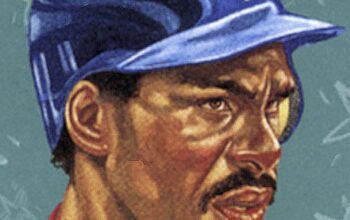Alan Hassenfeld is a name synonymous with innovation and philanthropy in the toy industry, particularly noted for his leadership at Hasbro, one of the world’s largest toy manufacturers. This article delves into his net worth, early life, education, career accomplishments, intriguing facts, and any controversies that may have stained his illustrious journey in the entrepreneurial realm.
Net Worth Overview
Estimates of Alan Hassenfeld’s net worth hover around several hundred million dollars. Much of his wealth can be attributed to his pivotal role in Hasbro, where he served as chairman and CEO, steering the company through transformative changes and expansions. Under his stewardship, Hasbro diversified its product range and engaged in lucrative licensing agreements, significantly boosting its revenue. His business acumen not only made him a significant player in the toy industry but also allowed him to accumulate substantial personal wealth, which he has used to further philanthropic initiatives.
Early Life and Education
Born on April 18, 1945, in a family of entrepreneurs, Hassenfeld’s early life was steeped in the spirit of business. Growing up in the vibrant city of Providence, Rhode Island, he was influenced by his father’s work as the president of Hassenfeld Brothers, a small textile firm that eventually transformed into Hasbro. Alan’s upbringing instilled in him a robust work ethic and a profound understanding of the intricacies involved in running a business. He attended Brown University, where he earned a Bachelor’s degree in Political Science. Hassenfeld’s education laid a strong foundation, honing his analytical and leadership skills which would later prove pivotal in his career at Hasbro.
Career Trajectory
Following his graduation, Alan Hassenfeld joined Hasbro in 1970, marking the beginning of a remarkable tenure. Initially working in various positions, he steadily climbed the corporate ladder, showcasing his proficiency in managing diverse operational facets. In 1989, he ascended to the role of CEO, propelling Hasbro to new heights. His vision to diversify the company’s offerings led to the acquisition of well-known brands and franchises, including the likes of Transformers, My Little Pony, and Play-Doh. Perhaps one of his key innovations was embracing the digital age by incorporating technology into the company’s product development process. This forward-thinking mindset enabled Hasbro to maintain its relevance in an ever-evolving market.
One striking episode in his career came when Hassenfeld orchestrated the licensing agreement with Disney which allowed Hasbro to create toy lines for iconic films. This partnership not only amplified Hasbro’s profitability but also solidified its position as a household name in the toy industry. Under his leadership, Hasbro’s revenues soared, making it a formidable competitor in the global market.
Philanthropic Pursuits
Alan Hassenfeld’s influence extends beyond the boardroom. Known for his commitment to social responsibility, he has actively engaged in various philanthropic endeavors. His initiatives focus on education, health, and the arts, and he has supported numerous charitable organizations and foundations. Notably, Hassenfeld has been a patron of children’s education, advocating for creative play and learning as essential components of child development. His contributions have not only benefitted the children but have also made a profound impact on the broader community.
Interesting Facts
Alan Hassenfeld’s life is laden with interesting anecdotes that reflect his dynamic personality and vision. For instance, he is known for his hands-on approach to management; he doesn’t shy away from engaging with employees at all levels, believing that collaboration fosters innovation. Additionally, Hassenfeld has been instrumental in promoting corporate culture that emphasizes teamwork and creativity, often encouraging employees to think outside the box.
He is also an avid collector of toy memorabilia, showcasing his lifelong passion for the industry he has significantly influenced. Each piece in his collection not only represents a nostalgic fragment of childhood for many but also serves as a testament to Hasbro’s rich legacy. Another intriguing fact is his ability to predict market trends. Hassenfeld’s foresight led him to champion sustainable practices within the manufacturing processes, a move that positioned Hasbro as a leader in eco-conscious toy production.
Controversies and Challenges
While Hassenfeld’s career has been predominantly illustrious, it has not been without challenges. The toy industry is notoriously volatile; thus, Hasbro faced its fair share of controversies, particularly concerning labor practices and safety standards. For example, during product recalls that garnered public scrutiny, Hassenfeld took a proactive stance, prioritizing consumer safety and transparency. These moments tested his leadership but ultimately reinforced his commitment to ethical business practices.
Additionally, as Hasbro navigated economic downturns, Hassenfeld faced criticism regarding layoffs and restructuring initiatives. However, his responses often aligned with a long-term vision, seeking to position the company for future growth rather than short-term gains, which showcased his resilience as a leader.
Conclusion
Alan Hassenfeld’s journey from a young boy in Providence to the forefront of the global toy industry illustrates what can be achieved with passion, vision, and determination. His contributions to Hasbro are indelible, reflecting a legacy marked by innovation and a steadfast commitment to values that transcend mere profitability. Through obstacles and triumphs, Hassenfeld remains a celebrated figure, embodying the essence of leadership in a multifaceted world. His unique blend of business acumen and philanthropic spirit continues to inspire the next generation of entrepreneurs and innovators.




